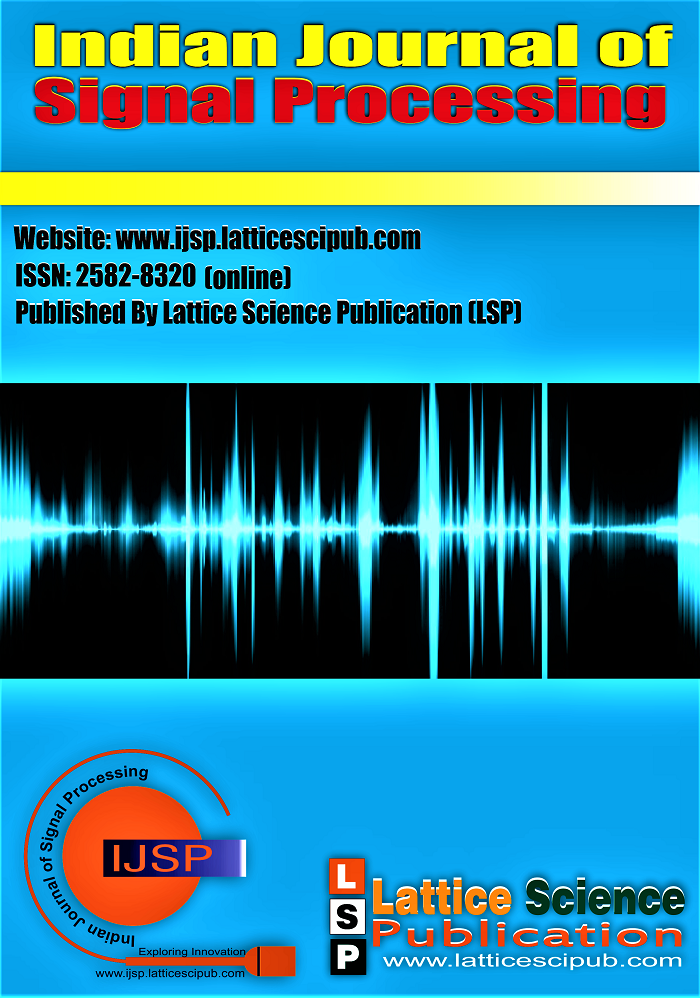A Flux Controlled Memristor using 90nm Technology
Main Article Content
Abstract
A flux-controlled memristor using complementary metal–oxide–(CMOS) structure is presented in this study. The proposed circuit provides higher power efficiency, less static power dissipation, lesser area, and can also reduce the power supply by using CMOS 90nm technology. The circuit is implemented based on the use of a second-generation current conveyor circuit (CCII) and operational transconductance amplifier (OTA) with few passive elements. The proposed circuit uses a current-mode approach which improves the high frequency performance. The reduction of a power supply is a crucial aspect to decrease the power consumption in VLSI. An offered emulator in this proposed circuit is made to operate incremental and decremental configurations well up to 26.3 MHZ in cadence virtuoso platform gpdk using 90nm CMOS technology. proposed memristor circuit has very little static power dissipation when operating with ±1V supply. Transient analysis, memductance analysis, and dc analysis simulations are verified practically with the Experimental demonstration by using ideal memristor made up of ICs AD844AN and CA3080, using multisim which exhibits theoretical simulation are verified and discussed.
Downloads
Article Details

This work is licensed under a Creative Commons Attribution-NonCommercial-NoDerivatives 4.0 International License.
How to Cite
References
D. B. Strukov, G. S. Snider, D. R. Stewart, and R. S. Williams, “The missing memristor found,” Nature, vol. 453, no. 7191, pp. 80–83, May 2008. [CrossRef]
L. Chua, “Memristor—The missing circuit element,” IEEE Trans. Circuit Theory, vol. CT-18, no. 5, pp. 507–519, 1971. [3] L. O. Chua and S. M. Kang, “Memristive devices and systems,” Proc. IEEE, vol. 64, no. 2, pp. 209–223, Feb. 1976. [4] S. P. Adhikari, M. P. Sah, H. Kim, and L. O. Chua, “Three fingerprints of memristor,” IEEE Trans. Circuits Syst. I, Reg. Papers, vol. 60, no. 11, pp. 3008–3021, Jun. 2013. [CrossRef]
G. S. Snider and R. S. Williams, “Nano/CMOS architectures using a field-programmable nanowire interconnect,” Nanotechnology, vol. 18, no. 3, Jan. 2007, Art. no. 035204. [CrossRef]
B. Muthuswamy and P. Kokate, "memristor-based chaotic circuits," IETE Tech. Rev., vol. 26, no. 6, pp. 417–429, 2009. [7] M. Itoh and L. O. Chua, “Memristor oscillators,” Int. J. Bifurcation Chaos, vol. 18, no. 11, pp. 3183–3206, Nov. 2008. [8] B. Muthuswamy, "Implementing memristor-based chaotic circuits," Int. J. Bifurcation Chaos, vol. 20, no. 05, pp. 1335–1350, May 2010. [CrossRef]
B. Muthuswamy and L. O. Chua, “Simplest chaotic circuit,” Int. J. Bifurcation Chaos, vol. 20, no. 05, pp. 1567–1580, May 2010. [CrossRef]
S. H. Jo, T. Chang, I. Ebong, B. B. Bhadviya, P. Mazumder, and W. Lu, “Nanoscale memristor device as synapse in neuromorphic systems,” Nano Lett., vol. 10, no. 4, pp. 1297–1301, Apr. 2010. [CrossRef]
B. Mouttet, “Proposal for memristors in signal processing,” in Proc. Nano-Netw., 2009, pp. 11–13. [CrossRef]
Y. V. Pershin and M. Di Ventra, “Practical approach to programmable analog circuits with memristors,” IEEE Trans. Circuits Syst. I, Reg. Papers, vol. 57, no. 8, pp. 1857–1864, Aug. 2010. [CrossRef]
D. Yu, H. H.-C. Iu, A. L. Fitch, and Y. Liang, “A floating memristor emulator-based relaxation oscillator,” IEEE Trans. Circuits Syst. I, Reg. Papers, vol. 61, no. 10, pp. 2888–2896, Oct. 2014. [CrossRef]
E. O. Torres, C. Sánchez-López, and J. Mendoza-López, “Frequency behaviour of saturated nonlinear function series based on opamps,” Rev. Mexicana Física, vol. 59, no. 6, pp. 504–510, 2013.
C. Sánchez-López, J. Mendoza-López, C. Muñiz-Montero, and M. A. Carrasco-Aguilar, “A floating analog memristor emulator circuit,” IEEE Trans. Circuits Syst. II, Exp. Briefs, vol. 61, no. 5, pp. 309–313, May 2014. [CrossRef]
Z. G. Cam and H. Sedef, “A new floating memristance simulator circuit based on second-generation current conveyor," J. Circuits, Syst. Comput., vol. 26, no. 2, pp. 29–43, 2017.
A. Ye¸sil, Y. Babacan, and F. Kaçar, “A new DDCC based memristor emulator circuit and its applications,” Microelectron. J., vol. 45, no. 3, pp. 282–287, Mar. 2014. [CrossRef]
R. K. Ranjan, N. Rani, R. Pal, S. K. Paul, and G. Kanyal, “Single CCTA based high frequency floating and grounded type of incremental/decremental memristor emulator and its application,” Microelectron. J., vol. 60, pp. 119–128, Feb. 2017. [CrossRef]
M. T. Abuelma’atti and Z. J. Khalifa, “A new memristor emulator and its application in digital modulation,” Analog Integr. Circuits Signal Process., vol. 80, no. 3, pp. 577–584, Sep. 2014. [CrossRef]
G. Kanyal, P. Kumar, S. K. Paul, and A. Kumar, “OTA based high frequency tunable resistorless grounded and floating memristor emulators,” AEU-Int. J. Electron. Commun., vol. 92, pp. 124–145, Aug. 2018. [CrossRef]
R. K. Ranjan, S. Sagar, S. Roushan, B. Kumari, N. Rani, and F. Khateb, “High-frequency floating memristor emulator and its experimental results,” IET Circuits, Devices Syst., vol. 13, no. 3, pp. 292–302, May 2019. [CrossRef]
Niranjan Raj, Student Member, IEEE, Rajeev Kumar Ranjan, Member, IEEE, and Fabian Khateb “Flux-Controlled Memristor Emulator and Its Experimental Results” IEEE. VOL. 28, NO. 4, APRIL 2020 [CrossRef]





